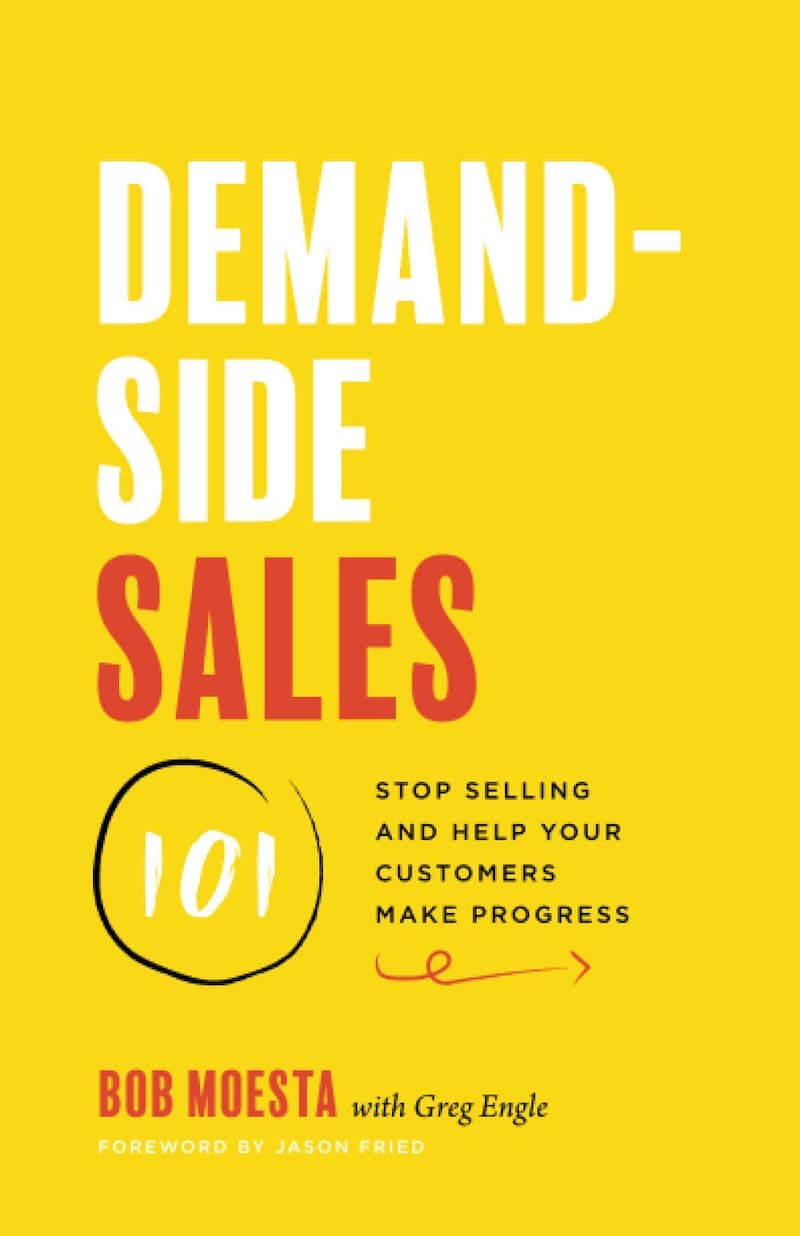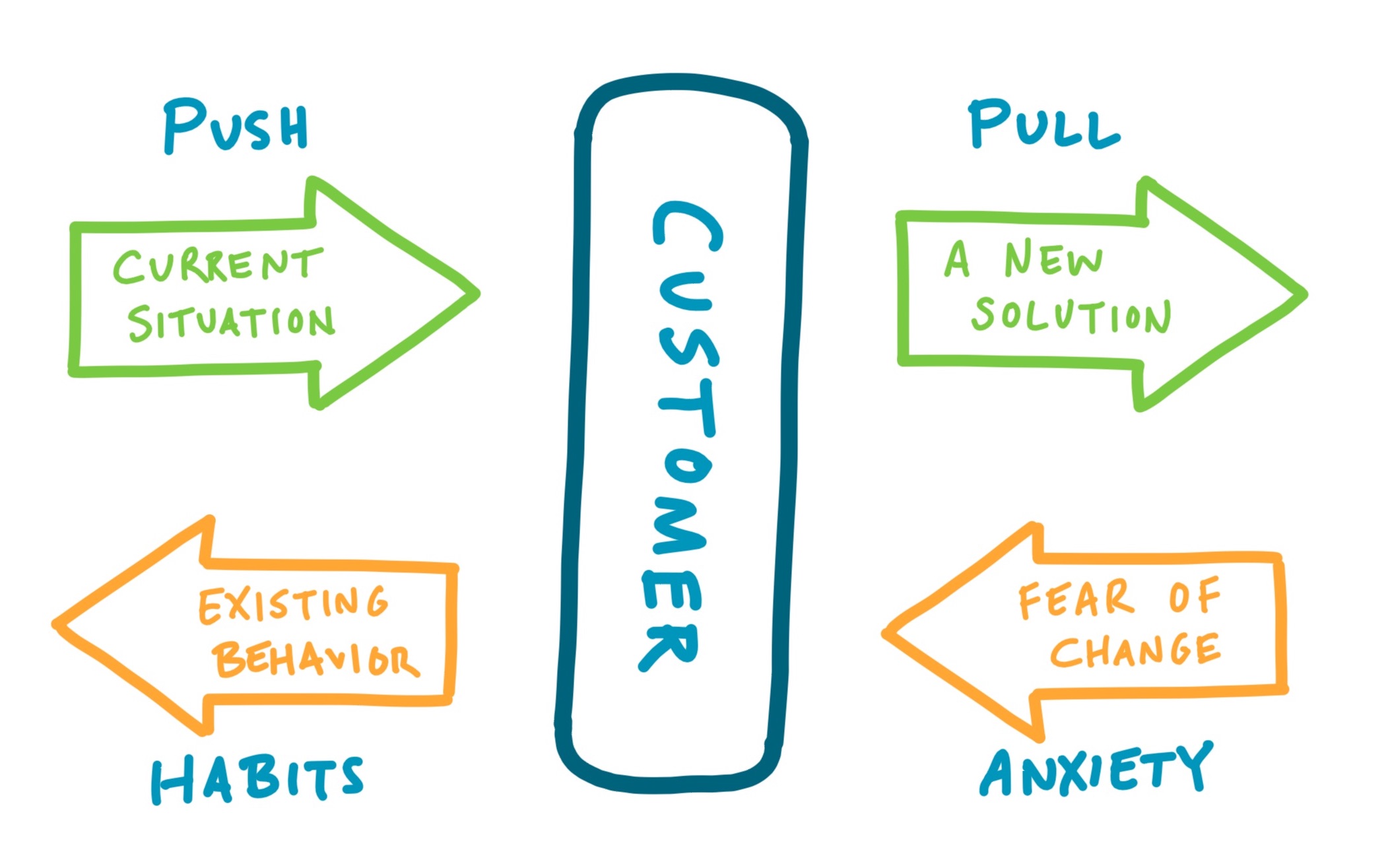
Demand-Side Sales 101
Stop Selling and Help Your Customers Make Progress
by
- Nonfiction
- Shelves: product, sales, marketing, business
- 224 pages
- ISBN: 9781544509969 (Goodreads)
- Format: Kindle
- Buy on Amazon
Summary
Clayton Christensen formulated the principles Jobs to Be Done theory a few years back, describing the world of consumers and creators in terms of the former seeking to “hire” or “fire” the solutions to problems in their lives. Jobs Theory turned the notion of customers seeking features and benefits on its head, and made product creators think in terms of “when” and “why” rather than “what” or “how”. Instead of taking customer-described needs as given, JTBD counsels a field research approach — observe a customer in-situ, pick apart specific behaviors, look for causation of behaviors rather than correlation between customers.

In Demand-Side Sales 101, Bob Moesta (one of Christensen’s original collaborators in developing Jobs Theory) applies the ideas behind JTBD to the role of sales. There’s a stereotype about sales that it’s always pushy, unnatural, inauthentic. But as Moesta makes clear in the book, most forms of sales don’t orient on being helpful; they don’t index on the notion of progress, the essential element that JTBD is all about.
Christensen’s Competing Against Luck provides a solid primer and companion piece on the structure of the theory, with plenty of examples. But I thought that Moesta’s applied model in Demand-Side Sales helped me grasp and make concrete the ideas. After all, those of us in the world of making things are looking for practical tools we can apply in our work to improve.
Key Takeaways
- People convince themselves, not salespeople — people love to buy things, but no one likes to be sold to
- Great salespeople might be better called concierges, coaches, or mentors — they exist to help customers make progress
- Traditional sales is oriented on supply-side thinking; what we can control, what we can influence, rather than getting on the customer’s demand side
- Forces of progress and resistance customers experience
- Push of the situation: we’re experiencing a pain or discomfort pushing us to get up and do something about it
- Pull of the new solution: once we look around, we’re compelled by solutions we see; new ways to do things pulling us toward giving them a shot
- Anxiety of change: buying a new service or product means I’ll have to learn something new; what if it doesn’t work?
- Habits of the present: the status quo “do what I did yesterday” approach has it’s downsides, but at least they’re known and expected
- Context creates meaning — ”the irrational becomes rational, with context”; we wonder why people do what they do, getting on the ground level gives us context to the decision making that’s invisible from above
- Contrast creates value — it’s hard to map value onto solutions with no target for comparison; frame questions with boundaries to help customers understand value and trade-offs
References
- Demand Thinking — A video series done by Ryan Singer and Chris Spiek
- Res Extensa #8: Jobs Theory — Thinking in Demand and Supply — I wrote about Jobs Theory in my newsletter, Res Extensa
- Synthetic A Priori — Ryan Singer’s podcast which dives into ideas like jobs, design, and complex systems.
- Know Your Customers’ Jobs to Be Done — Christensen and company’s original paper for the Harvard Business Review.